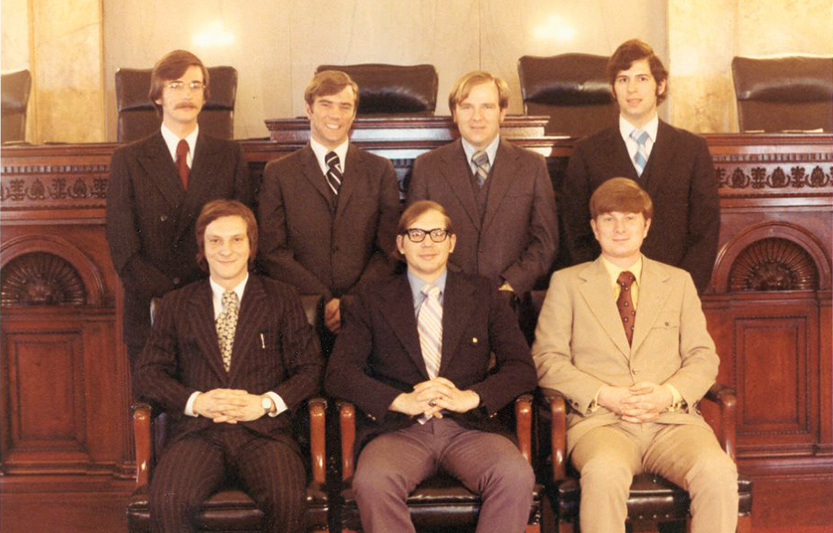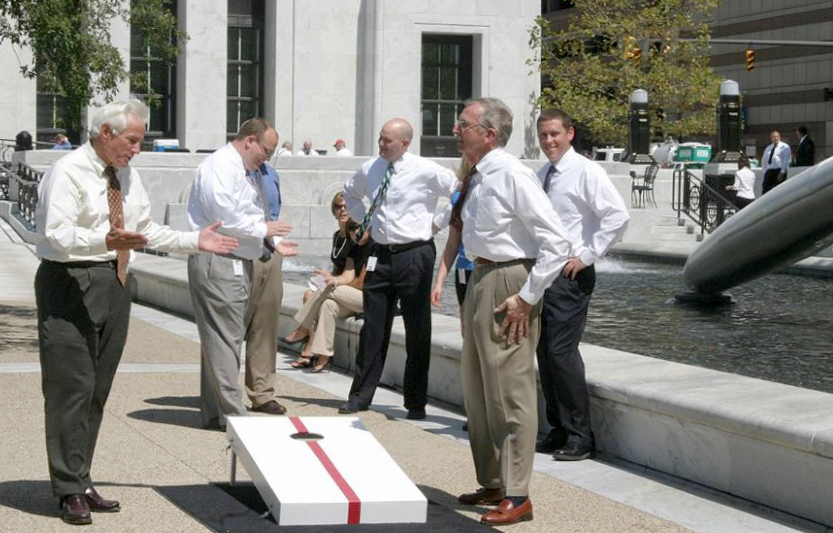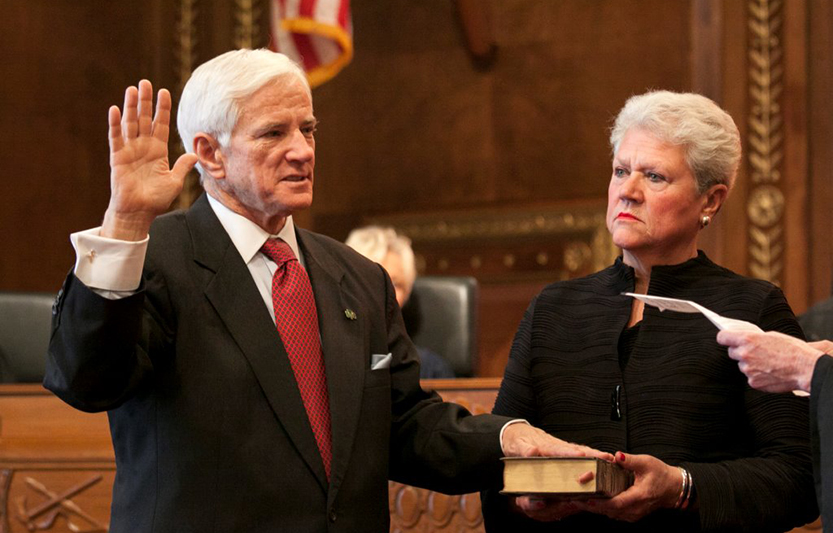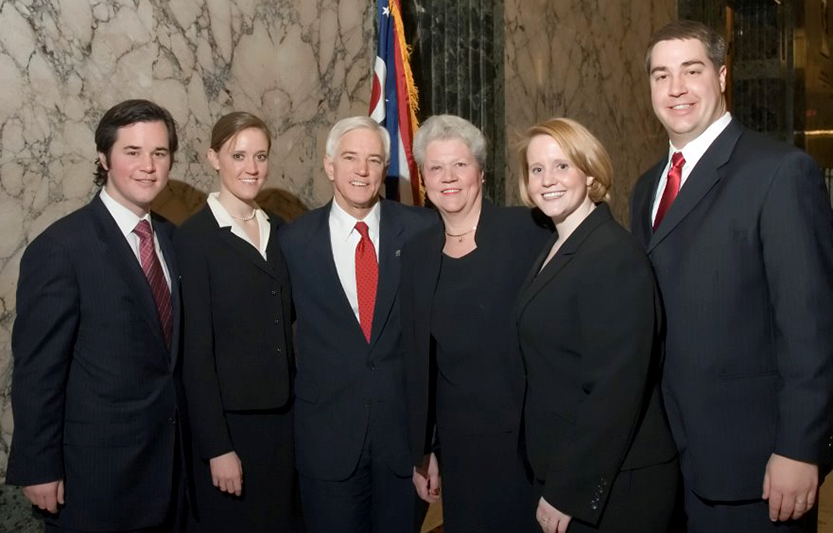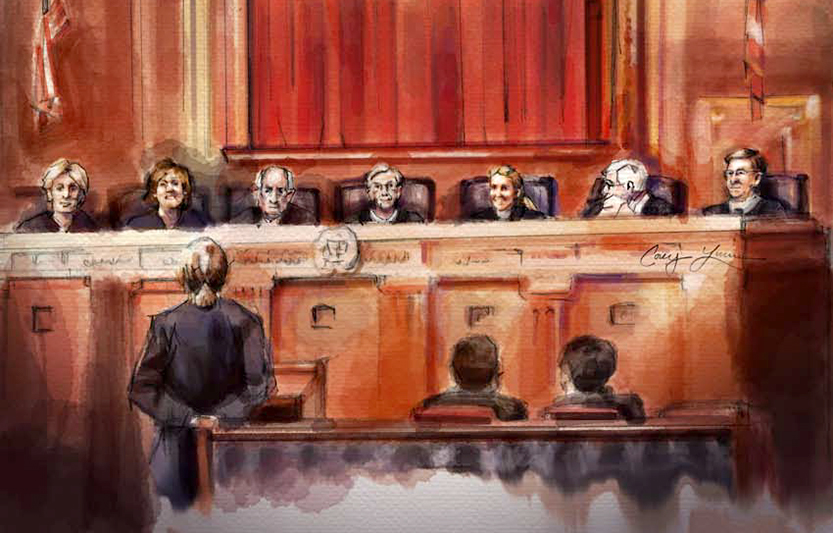Dedicated Jurist
Justice O'Donnell Looks Back on 15 years at the Court
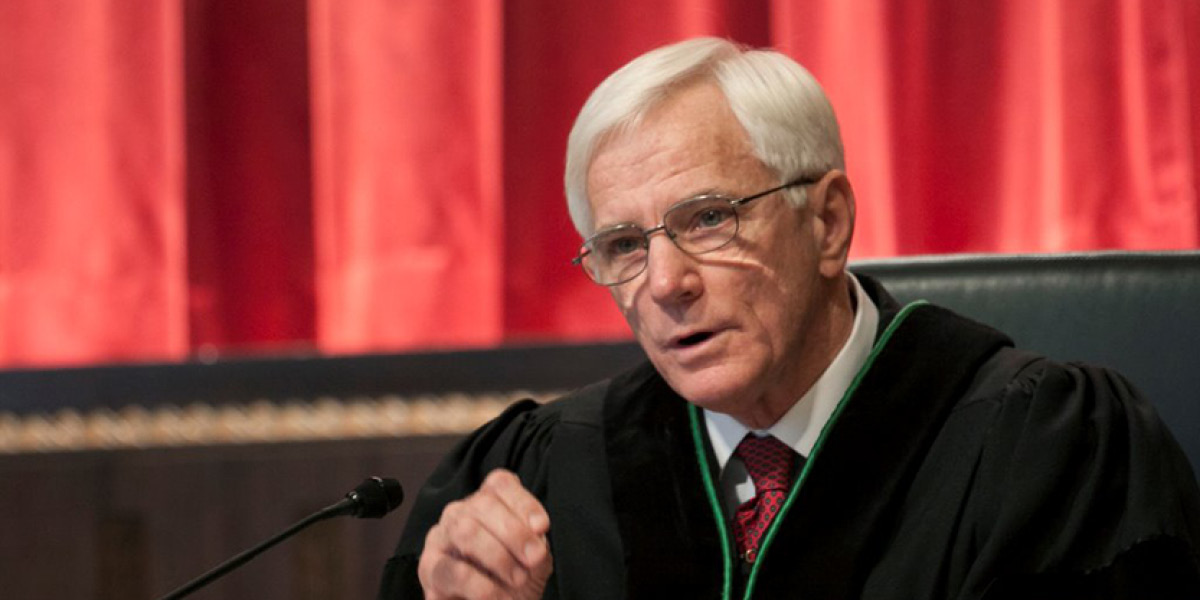
One of Ohio’s longest-serving justices will say goodbye to the Ohio Supreme Court this month.
The tenure of Justice Terrence O’Donnell, 72, comes to a close because of age restrictions on judges in Ohio.
Justice O’Donnell, who has served on the Court for more than 15 years, leaves with mixed feelings.
“It’s bittersweet to leave because I enjoyed it,” Justice O’Donnell said. “I have had the privilege and honor of working with terrifically great colleagues. This is a tremendous honor. It’s a responsibility, and I have literally worked my whole life to have this responsibility.”
Justice O’Donnell has the unique distinction of having worked in all three buildings where the Court has been housed.
In his days as a law clerk in 1971, the Court was located in the Ohio Statehouse annex. A year later, the Court moved to the third floor of the Rhodes Tower. In 2004, the Court moved to the current building, the Thomas J. Moyer Ohio Judicial Center.
Visit The Ohio Channel for video sharing options.
“What’s interesting about my experience is that I may be the only jurist, maybe the only person or lawyer in Ohio, who has been employed by the Supreme Court of Ohio at all three of its homes,” he said.
In all of those homes he worked at a desk that was built by prisoners at the Ohio State Penitentiary.
“I’ve been able to utilize it here for almost 15 years,” Justice O’Donnell said. “It’s so unique and so rare.”
Promoting Integrity in The Judiciary and Profession of Law
As he looks back on his tenure on the Court, Justice O’Donnell’s friendship with the late Chief Justice Thomas Moyer stands out as a fond memory.
“I worked with Tom, who was chief justice for 24 years,” Justice O’Donnell said. “I had many occasions to sit with him and talk with him about legal issues and life in general. Getting to know a person like that with such great distinction and high position, to recognize the humility he exhibited, was a privilege that I will long remember.”
Visit The Ohio Channel for video sharing options.
That relationship helped create one of his honored legacies — to increase integrity and professionalism among lawyers and judges across Ohio.
His leadership resulted in the implementation of the Court’s Lawyer-to-Lawyer Mentoring Program which is recognized nationally as one of the finest in the United States.
Today Ohio has 40,000 lawyers, and almost 15,000 have participated in the mentoring program in one way or another.
“There couldn’t be a greater reward than to have a program like that and to be connected with it,” he said.
Judicial integrity is an important part of serving on Ohio’s high court.
Visit The Ohio Channel for video sharing options.
“Our whole mission is to instill public confidence in what we do as members of the Court and restore confidence in the decisions that we render,” he said.
Justice O’Donnell has heard thousands of cases.
Among his most memorable: a case involving a teacher who was fired for criticizing evolution; another one on the legality of video lottery terminals at race tracks; also, a case involving lakefront property disputes.
Experience
Justice O’Donnell’s interest in practicing law began while serving on the debate teams in high school and at Kent State University. While attending college, a professor suggested he would be a great instructor, so he started teaching argumentation and debate at Cuyahoga Community College.
“You always learn more from the students than what you think you are teaching them,” Justice O’Donnell said.

After graduating from Cleveland-Marshall College of Law in 1971, he started his law career as a clerk for the Ohio Supreme Court, then served as a clerk for two judges on the Eighth District Court of Appeals.
Along with stretches as a private attorney, Justice O’Donnell began his judicial career in 1980 on the Cuyahoga County Common Pleas Court, which is the busiest trial court in Ohio. He served there for 14 years until his election to the Eighth District Court of Appeals in 1994. He served there for eight years, followed by a stint as a visiting trial court judge before his appointment to the Supreme Court in 2003, and his elections to the Court in 2006 and 2012.
“I consider it a great honor when I was asked about this position,” Justice O’Donnell said. “I was elected by the voters of our state on three separate occasions and I cherish the trust placed in me to make decisions which affect 11.5 million people.”
Beyond the Court
Justice O’Donnell is weighing his options about what he will do after the end of the year. He has been approached to serve as an arbitrator or mediator on cases, as well as a magistrate.
“It’s difficult to say goodbye, but I expect there will be new challenges and a new role,” Justice O’Donnell said. “I don’t intend to just merely stop. I’ll be engaged in the legal profession in a new capacity and a new role.”
As he reflects on his life, he is humbled by how far he has come.
His father was a dedicated police sergeant in Cleveland for 33 years. Justice O’Donnell had three siblings, including a brother who was developmentally disabled.
Visit The Ohio Channel for video sharing options.
“I think I probably learned a great deal from John,” Justice O’Donnell said. “He was an engaging type of person. He was very friendly, very outgoing, and in his own way, he was quite proud of the fact that I wore a robe.”
Enjoying time with family will also be central. Justice O’Donnell and wife, Mary Beth, have four children and eight grandchildren.
As for the two newcomers who will join the Court in January, the seasoned justice offers advice.
“We need to have members of the Court who don’t have agendas,” Justice O’Donnell said. “We need to have members of the Court who are interested in deciding the case based on the facts of law and recognize the separation of powers. I hope I have established a standard for members who will serve on the Court in future years. That standard is consistency.”

